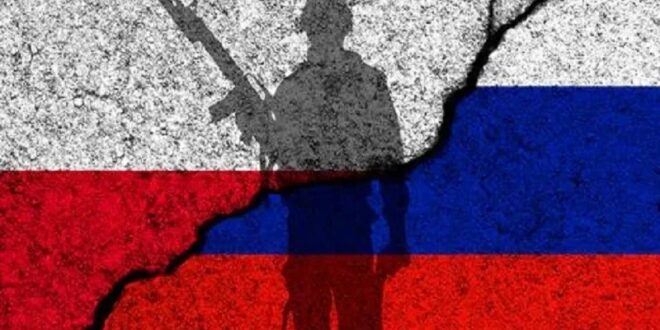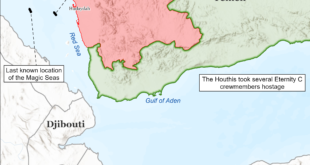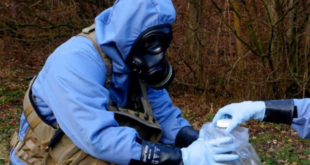This strongly hints that Poland isn’t ruling out a conventional intervention in Ukraine under certain circumstances and expects that it would rapidly escalate into another Polish-Russian War just like the one that broke out after World War I.
Chief of the General Staff of the Polish Armed Forces General Wieslaw Kukula told a press conference on Wednesday that “Today, we need to prepare our forces for full-scale conflict, not an asymmetric-type conflict.” This came right after the newly signed Polish-Ukrainian security pact, which was summarized here and analyzed in detail here. The relevant takeaways are that Poland will obtain enormous economic stakes in Ukraine, will assemble a ‘Ukrainian Legion’, and is contemplating intercepting Russian missiles.
With these terms in mind and noting how Kukula’s comments coincided with the NATO Summit, some observers suspected that they signaled progress on Poland’s possible plans to conventionally intervene in Ukraine to safeguard its investments there if Russia threatens them or achieves a breakthrough. The military-strategic dynamics of the conflict have trended in Russia’s favor for the past year, but no game-changing developments have yet to occur, though Poland isn’t taking any chances.
Kukula’s decision to prepare for a “full-scale conflict” strongly hints that Poland isn’t ruling out a conventional intervention in Ukraine under the abovementioned circumstances and expects that it would rapidly escalate into another Polish-Russian War just like the one that broke out after World War I. Not coincidentally, the Polish-Ukrainian security pact stipulates that they’ll “build on the Polish-Ukrainian brotherhood in arms in the 1920 war with Bolshevik Russia” when crafting new school curricula.
The reader should also be reminded that their pact calls for the creation of a ‘Ukrainian Legion’ in Poland, which head of the National Security Bureau Jacek Siewiera said could potentially include “millions” of “volunteers”. It’s obvious that this claim is overly ambitious, but the point is that this fighting force could function as the tip of the spear if Poland conventionally intervenes in the conflict, plus Polish servicemen might masquerade as Ukrainians to bolster its numbers and effectiveness.
Regardless of however another “full-scale” Polish-Russian War might begin, there’s no doubt that it would spike the risk of World War III. Poland is a NATO member to whom the nuclear-armed US has mutual security obligations, and even if their extension to allies’ activities in third countries is legally dubious, it’s unlikely that the US would hang any of its allies out to dry if their uniformed troops get pulverized by Russia in Ukraine. The Western elite would demand that the US respond in some way.
Leaving aside speculation about how such a conflict might end, it’s time to turn towards what Poland’s endgame would be for conventionally intervening in the first place. It was argued here back in spring 2022 that Polish interests wouldn’t be best served by annexing the Western Ukrainian regions that it controlled during the interwar period. Rather, this follow-up here from summer 2023 argues that a “sphere of influence” would be much better, which was already being pursued before their security pact.
Accordingly, upon weighing the costs and benefits, it’s much more likely that Poland would refrain from annexing Western Ukraine and instead remain content with turning it into a client state where Polish companies have privileged access to its natural and labor resources without any of the responsibilities. The ‘Ukrainian Legion’ could then act as Poland’s praetorian guards while some uniformed troops might still be deployed for training and other purposes behind the scenes.
Poland’s plans to nearly triple its border forces from 6,000 to 17,000, 9,000 of whom will form a rapid border reaction force, were also coincidentally announced on the same day as Kukula’s scandalous comment and could facilitate a conventional intervention. Those that might cross into Ukraine wouldn’t leave the Belarusian border vulnerable to illegal immigrant invaders or whatever other threats though since Poland already called on Germany to assume partial responsibility for that front.
As it stands, however, Poland would be taking a huge gamble by conventionally intervening in Ukraine anytime soon. Its planned military buildup isn’t complete and will still require at least a few more years before it’s ready to fight a “full-scale conflict”. There’s also no guarantee that the US would directly attack Russian forces in response to them pulverizing Poles ones in Ukraine. It might instead agree to asymmetrically partition Ukraine as a swift de-escalation compromise to avoid World War III.
That said, a limited intervention that’s concentrated in Western Ukraine and focused on non-combat roles can’t be ruled out, though the reader should know that a top European think tank’s latest survey proved that it would still be very unpopular with Poles. This could take the form of a “no-fly zone” over Lvov, around which its military-industrial and other investments could be based, and the deployment of uniformed troops there for training purposes alongside its ‘Ukrainian Legion’ praetorian guards.
Russia couldn’t ignore that development if it unfolds since doing so could embolden NATO as a whole to rapidly scale this Polish-led intervention to cover everything up to the Dnieper, after which the bloc’s hawks might get frisky and flirt with crossing the river to threaten Russia’s new regions. The resultant game of nuclear chicken that was described here could end in mutual catastrophe if Russia feels that it must employ tactical nukes as a last resort in self-defense to stop an impending invasion.
It’s therefore expected that Russia would kinetically respond to the official introduction of Polish troops in Ukraine and/or a limited “no-fly zone” over its western regions, though depending on the scale of Poland’s intervention and Russia’s response, the US might not get directly involved in the fray. To be clear, Poland might not do either of these two and could formally remain outside of the conflict, but Kukula’s comments nevertheless strongly hint that there are conditions under which it’ll take the plunge.
 Eurasia Press & News
Eurasia Press & News


